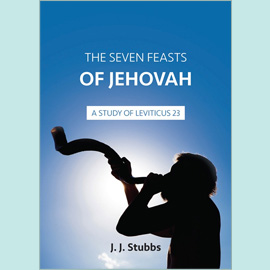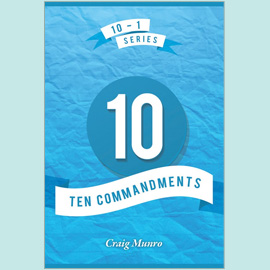Family history
The Parnell family of Queen's County, now known as County Laois in Leinster, belonged to the Anglo-Irish Protestant Ascendancy.1 John Vesey Parnell, the eldest son of Sir Henry Brooke Parnell, fourth Baronet of Rathleague, was born in Baker Street, London on 16th June, 1805. Sir Henry was active in politics, representing Maryborough in the Irish House of Commons from 1798 until the Act of Union in 1801. Thereafter he was elected to the United Kingdom Parliament representing an Irish constituency until, in 1833, he became the member for Dundee. He earned a footnote in history by putting a motion to Parliament on which the Duke of Wellington's administration was defeated in 1830. Lord Grey's Whig government then came to power, with Sir Henry holding office as Secretary of State at War. This was the Government that brought the Great Reform Bill before Parliament in 1832. Parnell held various offices of state until the Whig government fell in 1841. He was then raised to the peerage as Baron Congleton of Congleton in the County of Chester.
Conversion
When a child, John was taught to say his prayers by his mother Lady Caroline (eldest daughter of the first Earl of Portarlington) but family religion was strictly nominal and he knew nothing of the gospel. It was not until he was studying mathematics at Edinburgh University that he felt a longing to know God. He became dissatisfied with the social life enjoyed by wealthy under-graduates, and listened to a friend's advice to read the Epistle to the Romans. Parnell decided that to help to understand the text he would copy it out by hand. He came to chapter 8 verse 8 and wrote, So then they that are in the flesh cannot please God. He thought, That is exactly my problem, but then he realised that God justifies sinners who believe in Jesus and so he believed and was saved. His father was not best pleased to hear that his son had become an evangelical Christian, but granted him an allowance and freedom to make his own way in life.
Convictions
John Parnell immediately followed the example of Moses who had esteemed the reproach of Christ greater riches than the treasures in Egypt. He determined to live simply and frugally in the service of Christ. When he received a substantial inheritance on the death of an uncle he viewed the income as A trust committed unto me to be used only as He who gave it might indicate. He lived in Dublin during the formative period described in a previous article, and was one of the young men who desired the simplicity of gathering unto the name of the Lord. He and a few others had for some time been meeting privately to break bread, and when they learned that J G Bellett and others were doing the same in Francis Hutchinson's large house in Fitzwilliam Square they very happily came together. It was Parnell who became concerned about the privacy of their gatherings, feeling that the celebration of the Lord's Supper should be more of a testimony to the world, and in May, 1830 he secured the use of the auction room in Aungier Street that became the first public meeting place of brethren.2
Pioneering abroad
In the previous year Parnell had rendered an important service to the Lord's work by obtaining the use of a large seagoing yacht owned by a friend, to convey A N Groves, his family and companions on the first part of their journey to Persia.3 Parnell sailed on the voyage from Gravesend to St Petersburg. From there the missionary band travelled overland to Bagdad where they arrived in December, 1829. In September, 1830 Parnell, Edward Cronin and his sister Nancy (to whom Parnell was engaged to be married) led a second group which sailed from Dublin to France and then across the Mediterranean to Syria and finally down the Euphrates towards Bagdad. After a hazardous journey they arrived in Aleppo in Syria but were prevented from going further. During their extended stay there John Parnell and Nancy Cronin were married by the British Consul. The marriage was tragically short. When one of their companions decided to return to Britain John and Nancy determined to accompany him to the coast and see him safely on board a ship to France. Travelling was very rough and Nancy fell from her donkey, sustained serious injury, and died a few days later. With a heavy heart Parnell returned to Aleppo, from whence with his companions he finally departed in April, 1832 to complete the journey to Bagdad. They found that Groves and his family had endured much suffering including the death of Mrs Groves. The circumstances were enormously challenging amongst a hostile Muslim population, but some progress had been made with nominal Christians, and an Armenian widow named Khatoon, the mother of two children, professed faith in the Lord and joined the mission. She became Parnell's second wife on 21st May, 1833. The marriage of a British aristocrat to a middle-eastern woman was in those days most unusual, but Parnell felt it to be an answer to prayer. Groves went on to India having been informed of opportunities for unrestricted missionary work in areas under the control of the East India Company. He was later joined in Madras by Cronin and Parnell. For a time the Parnell family laboured in Pulicat a coastal town to the north of Madras. He spent much time in prayer concerning the way ahead and ultimately decided to return to England in 1837.
Service at Home
With his wife and her two children John Parnell settled in Teignmouth in "a somewhat primitive" house. The house and its furnishings were a testimony to sacrificial living, but warm fellowship was enjoyed by visitors. One remembered, He drew us out in the study of the Scriptures which he happily and usefully unfolded. When Parnell was asked to address those present he would say, Better make it a Bible Reading. Let's take God's word in our hands and see what He will give us. Years later he wrote a booklet The Open Meeting describing how the Holy Spirit will lead participants with mutual exhortation and encouragement. On Sundays he often walked to nearby towns to preach the gospel, and on one occasion was accompanied by J N Darby his friend from Dublin days. When his father died in June, 1842, Parnell inherited his title and estates and moved to London. He did not take his seat in the House of Lords until 4th November, 1854, and spoke only three times from the cross benches in support of Lord Shaftesbury's reforms. He continued with the rule he had set for himself of devoting one half of all that he received to the Lord's service.4 Throughout his life he objected to the practice of borrowing money for a good cause and then appealing for help to clear the debt. He would say, If the Lord intends you to do the work He will send the means to carry it out.
The difficulties that began in Plymouth in 1845 brought great distress to Lord Congleton. His sensitive nature shrank from controversy, but he did intervene with other leading brethren in an unsuccessful attempt to resolve matters. In November, 18465 he withdrew from association with Newton and the meeting in Ebrington Street, Plymouth, but remonstrated with G V Wigram (who had unquestioningly supported Darby) about actions that he felt had aggravated matters. He deplored the issue of the Bethesda circular which led to a breach with Darby and, sadly, with Cronin, his companion in Bagdad and India. In referring to those historic events it is worth reflecting on the fact that good, sincere and earnest men were found on both sides of the divide.
From 1849 Congleton was in fellowship with the assembly in Orchard Street, Marylebone where his pastoral care was greatly valued. He became increasingly reluctant to preach, preferring to talk to individuals or to small groups. In 1865 his Armenian wife Khatoon died shortly after her daughter's death. He married, for the third time in 1867, Margaret Catherine Ormerod, by whom he had his only child, a daughter Sarah Cecelia born in August, 1868. Lord Congleton was called home on 23rd October, 1883, respected by his brethren, many of whom from different parts attended his burial in Kensal Green Cemetery in London.
To be continued.
1 It is an irony of Irish history that Charles Stewart Parnell, son of a first cousin of Lord Congleton, should have become leader of the Irish Home Rule Party in the late nineteenth century.
2 Refer to Article 11 in this series in the December, 2013 issue of Believer's Magazine.
3 Modern Iraq.
4 Memoir of Lord Congleton, by Henry Groves.
5 Refer to Article 12 in this series in the January, 2014 issue of Believer's Magazine.









